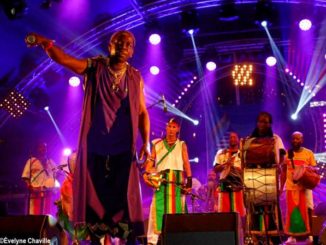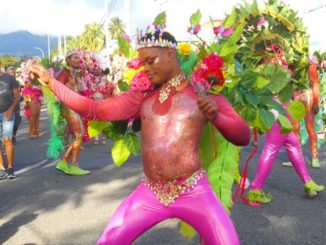
In the Guadeloupean archipelago, there are many festivals that highlight the artistic, culinary and other heritage. In fact, almost every town has its own festival that is supposed to promote the territory and its economy. The latest born is the “Festival de Barbecue” which took place in Morne-à-l’Eau at the end of July. Unfortunately, the mango (Mangifera indica) has not yet found favor in the eyes of anyone, even though it has been present in our territory for centuries. Perhaps many (by ignorance) find it too ordinary…
In Guadeloupe, a few years ago, the older generations – people over 40 years of age – used to go during school holidays (especially on Wednesdays) in search of the famous “mangoes” on the lands of the archipelago which were not as fenced and covered with concrete as they are today. It was a real pleasure to taste in the woods this fruit of which each variety has a particular flavor. These walks took place even when the parents had planted a mango tree not far from the family home. Elders knew the value of this tree.
Nowadays, the mango tree is practically ignored, sometimes despised. Right now, in private gardens or in the countryside, tons of mangoes are littering the ground and are rotting because almost nobody wants them. We prefer to give the children an apple from France, it’s so much better than this vulgar “mango” that some people collect in buckets and wheelbarrows to give to their pigs. Others find this tree planted by the elders rather dirty, so they prefer to cut it down with a chainsaw to make it disappear.
What would the spiritual leader Buddha think of it, because according to legend, he liked to sit under a mango tree to meditate? Native to Asia (Northeast India, Myanmar/ex Burma and Bangladesh), where it has been planted for 4,000 years, the mango tree can live for 400 years. The word “mango” comes from Tamil “mangkay”, it entered the French language in the 17th century and comes from the Portuguese “manga”.
The mango tree is revered by the Hindus who consider it a lucky charm, its fruit bringing love and fortune is associated with Lakshmi, goddess of fortune, prosperity, wealth and abundance. Its leaves hung on the doors of houses would chase away evil spirits. In India, children are immersed very early in this “cult of mango” by learning to recognize the mango which is the national fruit, the king of fruits. Every year in August, the city of New Delhi hosts the International Mango Festival where more than 1,000 mangoes are presented and various competitions (best producer/best mango, best mango eater) and events are organized.
The mango tree is believed to have arrived in the New World (especially in Brazil) by Portuguese sailors in the 18th century. According to the Centre de coopération Internationale en Recherche Agronomique pour le Développement (CIRAD) of Guadeloupe, its presence is reported in Brazil in 1742, in Barbados in 1748, in Mexico in 1778, in Jamaica in 1782 and in 1839, it is already well known in Guadeloupe as specified in the “Traité des Fruits, tant indigènes qu’exotiques” by Jean-François Couverchel of the Academy of Medicine and the Society of Pharmacy of Paris, which supposes that it had been introduced to the island for many years.
We can imagine that a tree and its fruit with such virtues were also brought by the Indians who came to work in Guadeloupe from December 1854.
Every year, from May to September and sometimes later since there’s no more season as we say, this tropical tree which can reach about thirty meters high produces many fruits. If in India, there are more than 1,000 varieties of mangoes, in Guadeloupe there are 120 varieties or more than 300 varieties. We can mention some names: apple mango, thread mango, zékoden (turkey egg) mango, beef mango, grafted mango, julie mango, tinn’ mango, queen amelie mango, round mango etc.
In Trinidad and Tobago, where there is a National Mango Board, there are more than 70 varieties ; in Martinique, about 100 varieties ; in Nevis, 44 varieties.
Note that mango is called mango in Creole, mango in English and mangó in Spanish, a single name for a very popular fruit in the Caribbean…
For several years, some Caribbean islands, whether or not they have experienced Indian immigration, have been highlighting this fruit through cultural and culinary events that usually take place in July : “Nevis Mango Festival”, “St Croix mango Melee”, “Trinidad & Tobago Mango Festival”, “Mango Array & Tropical Fruit Festival” (Tortola, British Virgin Islands), “Mango Madness” (St. Lucia), “Antigua & Barbuda Mango Festival” etc.
Organizing a “Mango Festival” in Guadeloupe would be a real opportunity to address various themes related to the economy, agriculture, culture, art, cooking, agro-processing, cosmetics, health through plants, among others, during conferences, various workshops, culinary competitions, art and craft exhibitions. This festival would also be an opportunity to talk with our Caribbean neighbors who have varieties of mangoes unknown in our archipelago.
So, what are we waiting for to finally promote this fruit heritage?



